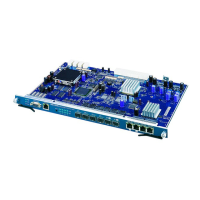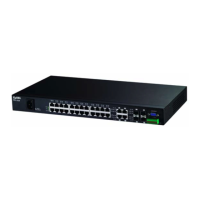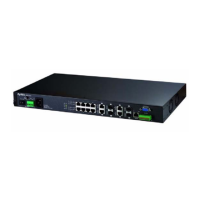Chapter 29 port Commands
Management Switch Card User’s Guide
782
The following example sets ADSL port 5 on the line card in slot 7 to only use up to 10.0 dBm of
power for upstream transmissions, 11.5 dBm of power for downstream transmissions and -7.0 dBm
of aggregated receive power.
29.4.15 port adsl psd maximum Command
Syntax:
port adsl psd maximum <slot-port> <us-psd> <ds-psd>
where
This command sets the PSD masks for the upstream and downstream channels. PSD defines the
distribution of a line’s power in the frequency domain. A PSD mask is a template that specifies the
maximum allowable PSD for a line.
The following example sets the maximum upstream and downstream PSD masks of port 1 on the
line card in slot 2 to -200 (-20 dBm/Hz) and 10 (1 dBm/Hz) respectively.
29.4.16 port adsl set Command
Syntax:
port adsl set <slot-port> <profile> <mode>
where
This
command assigns a specific profile to an ADSL port(s) and sets the port’s ADSL mode (or
standard). The profile defines the maximum and minimum upstream/downstream rates, the target
upstream/downstream signal noise margins, and the maximum and minimum upstream/
downstream acceptable noise margins of all the ADSL ports to which you assign the profile.
ras> port adsl power 7-5 fix 100 115 -70
<us-psd> =
Maximum upstream PSD (Power Spectrum Density) mask (between -400 to 40 in
units of 0.1 dBm/Hz).
<ds-psd> =
Maximum downstream PSD mask (between -400 to 40 in units of 0.1 dBm/Hz).
ras> port adsl psd maximum 2-1 -200 10
<profile> = The ADSL profile that will define the settings of this port.
<mode> = The ADSL operational mode.
for Annex A:
gdmt, t1413, glite, auto, adsl2 or adsl2+
for Annex B:
gdmt, etsi, auto, adsl2 or adsl2+
When set to auto, the port follows whatever mode is set on the other end of the
line.

